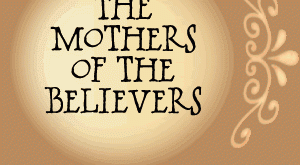 I got into a rickshaw in Beijing and my 65–year-old wrinkled driver immediately whizzed me through the hutongs — old, narrow alleyways. He looked at me and talked in Chinese. I turned to my guide.
I got into a rickshaw in Beijing and my 65–year-old wrinkled driver immediately whizzed me through the hutongs — old, narrow alleyways. He looked at me and talked in Chinese. I turned to my guide.
"He's asking where you are from." "Aygee," I replied in my broken Chinese — meaning "Egypt." He pointed at my headscarf. "Are you Hindu?" "No! Muslim." He smiled and pointed to himself. "Moosleeman."
For many people, it comes as a shock to learn that officially there are at least 20 million Muslims in China- that is a third of the UK's total population. Unofficially, the number is even higher, some saying 65.3 million and even 100 million Muslims in China — up to 7.5 percent of the population.
Regardless of the real figure, the reality is that Islam in China is almost as old as the revelation of Islam unto Prophet Muhammad. Twenty years after the Prophet's death, diplomatic relations were established with China by Caliph Uthman. Trade was followed by settlement, until eighty years after the Hijrah, pagoda-style mosques appeared in China.
A century later, in 755, it became common for Chinese emperors to employ Muslim soldiers in their armies and also as government officials.
Today, the population of China includes 56 ethnic groups, 10 of which are Muslim. Out of these 10 minority groups, the Hui (short for Huizhou) are the largest group at 9.8 million, making up 48 percent of China's Muslim population.
The second largest group is Uyghurs at 8.4 million, or 41 percent of the Chinese Muslim population. The Hui speak Chinese, unlike Uyghurs and five other Muslim ethnic groups, which speak Turkic languages. Overwhelmingly Sunni in belief and practice, the Hui are ethnically and culturally Chinese, virtually indistinguishable from the Han, who make up China's billion-strong community. If my rickshaw driver had not told me he was Muslim, I would have never guessed.
For over a millennium, and across five major imperial dynasties, the Hui have lived in China peacefully, spreading in every province and contributing to every aspect of Chinese life, from the military and economy to arts and sciences.
Thriving in a non-Muslim civilization, the Hui managed to create an indigenous Islamic culture that is uniquely and simultaneously Chinese and Muslim.
Their experience, as Dru Gladney, author of Dislocating China, puts it, is a "standing refutation of Samuel Huntington's clash of civilizations." No identity crisis whatsoever!
 |
| Ethar with a group of Chinese Muslim women. |
Harmony
Islam began in an Arab region.On the surface, it seemed to be at complete odds with Chinese traditions and Confucianism, which at the time was the official religion of China.
Ancient Chinese people saw their civilization as the epitome of human development, and had Islam been presented as an alien faith, they would have rejected it completely and seen it as unworthy, with no place in their world.Islam in China would have become isolated, and perhaps as fleeting as Christianity was.
"But this was unacceptable," said the Imam of the Grand Mosque of Xian, the first mosque to be built in China almost 1,400 years ago. Sitting in front of him, trying not to gawp at the incredible architecture surrounding me, I asked him why.
"Chinese Muslims love their country and its people. We are Chinese. We cannot be part of China. There is even a hadith that says, 'Love of your country is part of faith,'" he said.
The Hui scholars therefore searched to find the common ground between Islam and the main faiths of China: Confucianism, Daoism (Taoism), and Buddhism. They became experts in Islamic and Chinese texts, traditions, and practices, and without their efforts, Chinese Muslim culture would have remained alien and foreign, isolated and far removed from the community.
In Western discourse, Dr. Umar Abdullah of the Nawawi Foundation told me, many scholars argue that in order to integrate into the country, Chinese Islam was Sinicized, which means orthodox Islamic faith and practice was made Chinese. The most evident example of how Chinese Muslims created their own unique forms of cultural expressions is their mosques, of which around 45,000 exist in China.
Stunningly beautiful, the mosques are quintessentially both Chinese and Muslim. My first sight of a Chinese mosque literally took my breath away. On the outside, they are built in traditional Chinese style, with pagoda-like roofs, Chinese calligraphy, and Chinese archways.
On the inside, however, the Islamic influences are crystal clear: beautiful Chinese Arabic calligraphy, an octagonal minaret, and a mihrab, a Chinese Imam lecturing in Mandarin and making supplication in perfect Arabic.
Examples of the fusion of Chinese and Islamic traditions are everywhere.
In Xian, where an estimated 90,000 Muslims live, while wandering through a noisy souvenir market, I came across traditional wall hangings with Arabic hadith written in calligraphy, porcelain tea sets with Qur'anic verses inscribed on them, popular red amulets with an attribute of Allah at the center rather than the traditional Chinese zodiac animal, rosaries with a Name of Allah printed on each bead in Chinese characters, and Qur'an copies printed in both Chinese and Arabic.
Writing
 |
| Chinese Muslims create their own unique forms of cultural expressions through their mosques. |
When it comes to language, rather than transliterating Arabic terms into words that might be mispronounced and misunderstood — since the Chinese writing system is not phonetic — the early Hui scholars decided to choose words that best reflected the meanings of the Arabic terms and, at the same time, were meaningful in Chinese tradition.
Their purpose in doing this was twofold: (1) They showed the Chinese community that they respected, believed in, and honored the Chinese tradition, and (2) Islamic concepts, which in Arabic might have seemed inconceivable, were not only relatable, but even similar.
The Qur'an, for example, was referred to as the Classic: The sacred books of China were called the Classics, and as such the Qur'an was psychologically put in the same category. Islam was translated as Qing Zhen Jiao ("The religion of the Pure and the Real").
At the great Mosque of Xian, Chinese characters proclaim, "May the religion of the Pure and the Real spread wisdom throughout the land."
Haroun Khanmir, a 24-year-old Islamic studies student at the Xiguian mosque in Lingxia, has studied Arabic for 4 years. "Being fluent in Chinese and Arabic allows me to appreciate the brilliance of the terms chosen.They have so many nuances that instantly explain the true essence of Islam using main Chinese values."
When comparing Islamic and Chinese traditions, the Hui scholars searched for common ground, coming up with five main principles that both traditions shared. And although they were clear about where Islamic belief deviated from Chinese thought, they did not set out to reject Chinese tradition and prove why it was wrong.
Instead, they showed how Islam added to it. By not painting Islamic and Chinese tradition in binary opposition where belief in the former meant rejection of the latter; they avoided distressing Muslims who were very much Chinese.
"I consider myself 100 percent Chinese," said smiling 18-year-old Ahmed Dong, dressed in a white thobe and turban. "And I don't see why, even with different politics and languages and beliefs, we can't be so; we share the same language, customs, and culture.”
“Our country is so diverse, and yet unity is a value we all wish to have, rather than living separately."
One of the hundreds of students at the Xiguian mosque who come from a number of different ethnic backgrounds and study the Qur'an, Hadith, Arabic, English, as well as computer skills, Dong hopes to continue his studies in an Arabic country, and then come back and do Da`'wah in China, raising awareness of Islam.
Post Disclaimer | Support Us
Support Us
The sailanmuslim.com web site entirely supported by individual donors and well wishers. If you regularly visit this site and wish to show your appreciation, or if you wish to see further development of sailanmuslim.com, please donate us
IMPORTANT : All content hosted on sailanmuslim.com is solely for non-commercial purposes and with the permission of original copyright holders. Any other use of the hosted content, such as for financial gain, requires express approval from the copyright owners.
 Sri lanka Muslims Web Portal Sri Lanka Muslims News Center
Sri lanka Muslims Web Portal Sri Lanka Muslims News Center
 Donate
Donate


